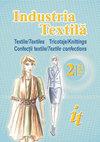利用环保静电纺丝技术,从玫瑰水和植物提取物中提取纳米纤维
IF 0.9
4区 工程技术
Q3 MATERIALS SCIENCE, TEXTILES
引用次数: 2
摘要
本研究以聚乙烯醇(PVA)聚合物为原料,以玫瑰水、玫瑰提取物和马偶植物提取物为天然溶剂,采用环保静电纺丝或绿色静电纺丝技术制备纳米纤维,并对制备的纳米纤维的形态特性进行了研究。为此,从4%聚乙烯醇水溶液中制备了7种不同形态的纳米纤维。利用扫描电镜对制备的纳米纤维进行了形貌分析。结果表明,用蒸馏水制备的纳米纤维形成均匀的纳米纤维形态,而在低电压下形成致密的纳米纤维结构,在高压下纳米纤维形态减少。在所有的静电纺丝实验中,观察到纳米纤维是随机收集在集热器板上的。结果表明,用非蒸馏水溶剂制备的纳米纤维,特别是用马黛茶提取物制备的纳米纤维,具有低头结构和光滑的形貌。结果表明,静电纺丝技术可以从天然溶剂中制备出环境友好型纳米纤维,并且可以通过工艺条件的改变来改善其形态性能。据认为,在研究范围内生产的纳米纤维是特别用于健康、卫生和食品应用的候选材料,因为它们的生产性质纯净,不使用任何其他添加剂。本文章由计算机程序翻译,如有差异,请以英文原文为准。
Nanofiber production from rose water and mate plant extract solutions
using environmentally friendly electrospinning
In this study, it was aimed to produce nanofibers from polyvinyl alcohol (PVA) polymer using natural solvents such as
rose water, rose extract and mate plant extract by the environmentally friendly electrospinning or green electrospinning
technique in other words and it was also aimed to investigate the morphological properties of produced nanofibers. For
this purpose, nanofibers having 7 different morphologies were produced from 4% PVA aqueous solutions. The
morphologies of the produced nanofibers were analysed by scanning electron microscopy (SEM). As a result of these
analyses, it was observed that uniform nanofiber morphology was formed in nanofiber productions made with distilled
water, while in the others, dense bead structure was formed at low voltages and nanofiber morphology with reduced
bead amount at high voltages was observed. In all electrospinning experiments, it was observed that the nanofibers
were randomly collected on the collector plate. It was observed that the nanofibers obtained from the solutions prepared
from solvents other than distilled water, especially the one from the mate plant extract, had a low bead structure and a
smooth morphology. These results showed that environmentally friendly nanofibers can be produced from natural
solvents by electrospinning technique and their morphological properties can be improved via modification in process
conditions. It is thought that the nanofibers produced within the scope of the study are candidate materials especially
for health, hygiene and food applications since they are produced in pure properties without using any other additives.
求助全文
通过发布文献求助,成功后即可免费获取论文全文。
去求助
来源期刊

Industria Textila
工程技术-材料科学:纺织
CiteScore
1.80
自引率
14.30%
发文量
81
审稿时长
3.5 months
期刊介绍:
Industria Textila journal is addressed to university and research specialists, to companies active in the textiles and clothing sector and to the related sectors users of textile products with a technical purpose.
 求助内容:
求助内容: 应助结果提醒方式:
应助结果提醒方式:


